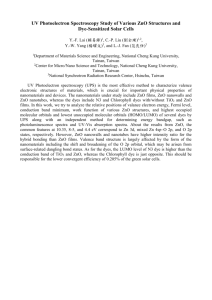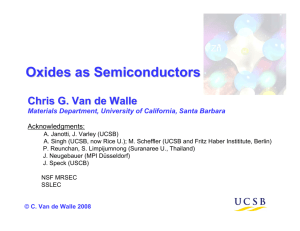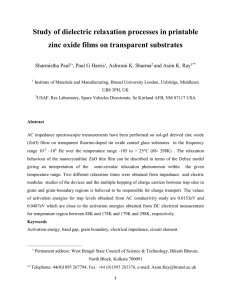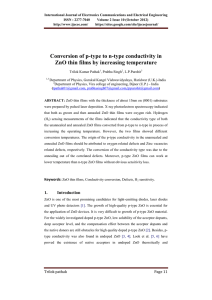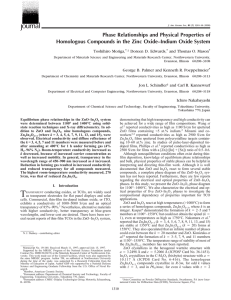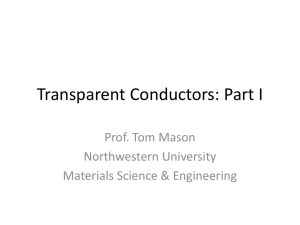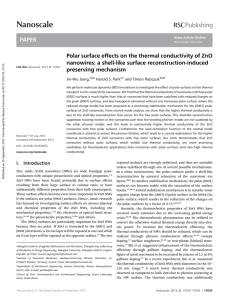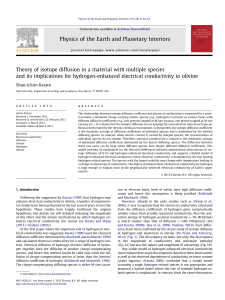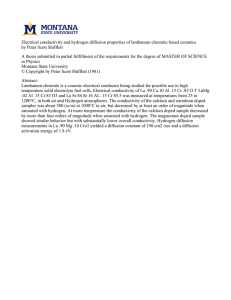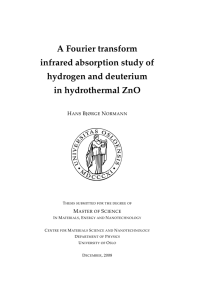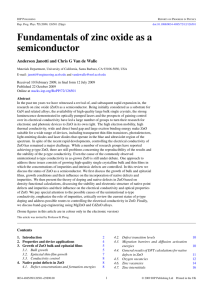P033
advertisement
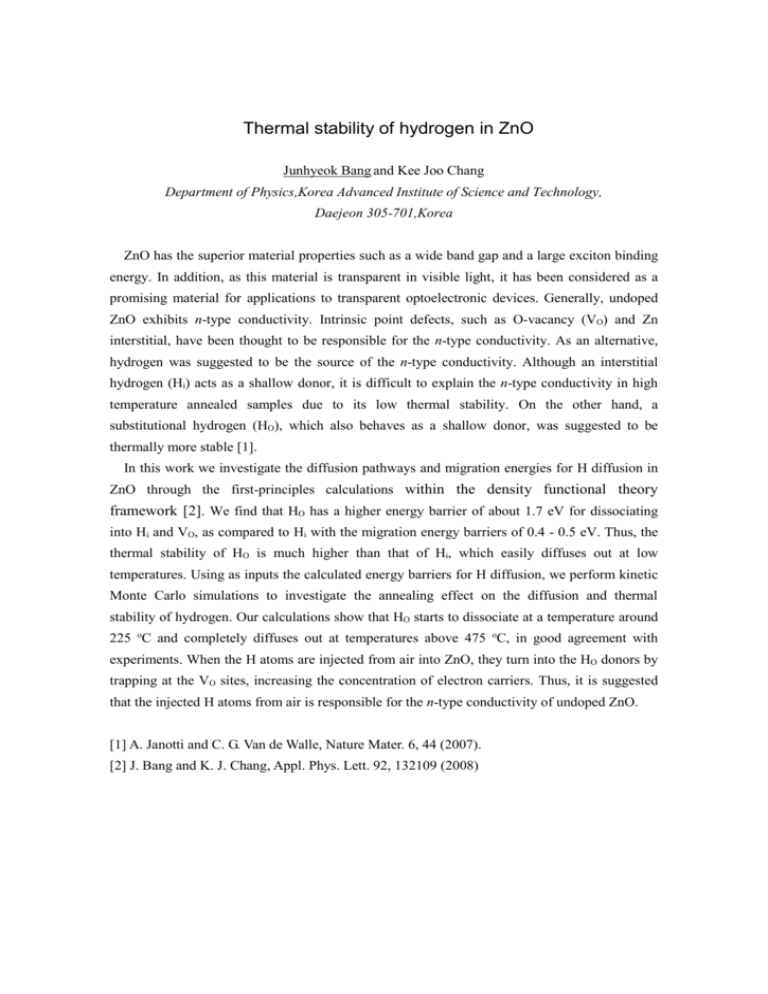
Thermal stability of hydrogen in ZnO Junhyeok Bang and Kee Joo Chang Department of Physics,Korea Advanced Institute of Science and Technology, Daejeon 305-701,Korea ZnO has the superior material properties such as a wide band gap and a large exciton binding energy. In addition, as this material is transparent in visible light, it has been considered as a promising material for applications to transparent optoelectronic devices. Generally, undoped ZnO exhibits n-type conductivity. Intrinsic point defects, such as O-vacancy (VO) and Zn interstitial, have been thought to be responsible for the n-type conductivity. As an alternative, hydrogen was suggested to be the source of the n-type conductivity. Although an interstitial hydrogen (Hi) acts as a shallow donor, it is difficult to explain the n-type conductivity in high temperature annealed samples due to its low thermal stability. On the other hand, a substitutional hydrogen (HO), which also behaves as a shallow donor, was suggested to be thermally more stable [1]. In this work we investigate the diffusion pathways and migration energies for H diffusion in ZnO through the first-principles calculations within the density functional theory framework [2]. We find that HO has a higher energy barrier of about 1.7 eV for dissociating into Hi and VO, as compared to Hi with the migration energy barriers of 0.4 - 0.5 eV. Thus, the thermal stability of HO is much higher than that of Hi, which easily diffuses out at low temperatures. Using as inputs the calculated energy barriers for H diffusion, we perform kinetic Monte Carlo simulations to investigate the annealing effect on the diffusion and thermal stability of hydrogen. Our calculations show that HO starts to dissociate at a temperature around 225 oC and completely diffuses out at temperatures above 475 oC, in good agreement with experiments. When the H atoms are injected from air into ZnO, they turn into the HO donors by trapping at the VO sites, increasing the concentration of electron carriers. Thus, it is suggested that the injected H atoms from air is responsible for the n-type conductivity of undoped ZnO. [1] A. Janotti and C. G. Van de Walle, Nature Mater. 6, 44 (2007). [2] J. Bang and K. J. Chang, Appl. Phys. Lett. 92, 132109 (2008)



